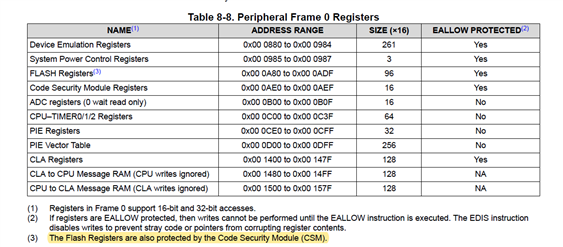Other Parts Discussed in Thread: UNIFLASH
Hello Champs,
We know that CSM prevents access/visibility to on-chip memory to unauthorized person. The CSM of F28035 can secure Flash and RAM. Does it mean that it also locks all registers at the same time, so that the registers cannot be modified?
Best Regards,
Julia


